#histology
Text

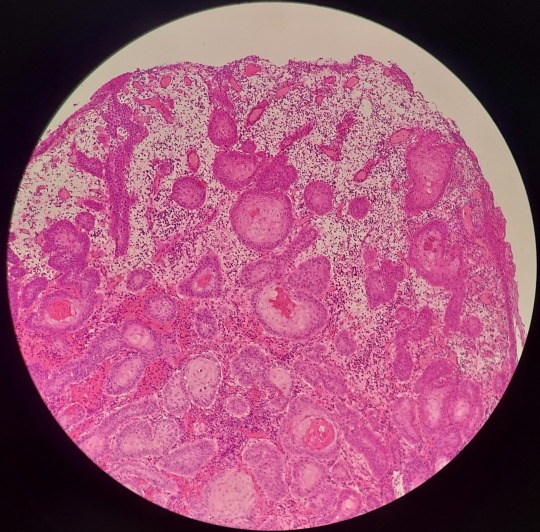


Work has had a few squamous cell carcinomas come in recently and I wanted to share just how pretty these can look, even when they are inflamed like this one is.
This invasive neoplasm typically consists of islands and trabeculae of keratinising (keratin-producing) stratified squamous epithelium. They can range from well differentiated like in this case, to more poorly differentiated and difficult to diagnose. The presence of keratin pearls (pictured in the top left and bottom right photos) is a huge help in diagnosing these neoplasms.
214 notes
·
View notes
Text
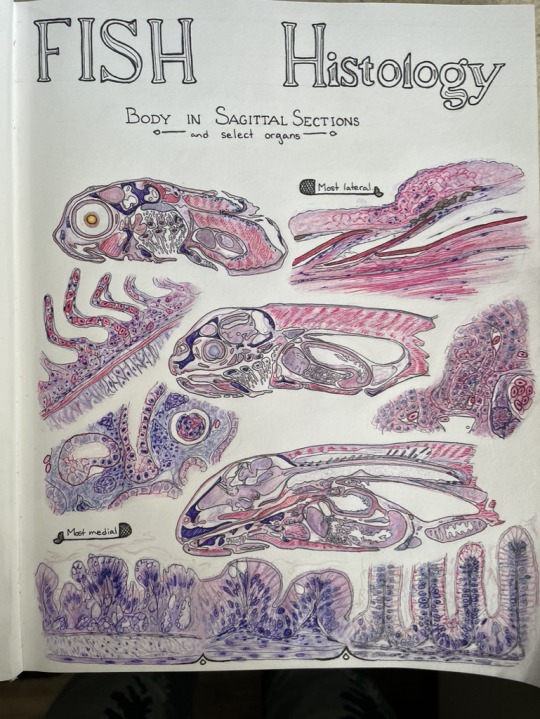



I cannot believe I didn't post this one here! Drawn last year, the biggest page of my fish anatomy and histology atlas.
Technically, transverse sections are more useful for looking at symmetry, so you can see if something is bilateral, but sagittal sections are just so cute! I love seeing a whole fish on a slide.
#fish#histology#anatomy#histopathology#histopath#fish doctor#veterinary#medicine#veterinary medicine#vet student#vetblr#art#pencil#pen#h&e staining#aquatic#port
76 notes
·
View notes
Text
Multinucleated Giant Cell Appreciation Post



#i don't think I'll ever get sick of these guys#they're so fun#pathology#histology#vetblr#pathblr#lizziedoesresidency
93 notes
·
View notes
Text


wish me luck for my presentation /exam
#i went a bit over the top i really didnt had to paint#but painting made my hangover way better than just studying#its for the intro of an article about Intestine on Chips#they cocultured human cells from biopsies on chips - like electronic chips !!#honestly fascinating#histology#medecine#medblr#science#biology#watercolor#gastroenterology#digestive system#studyblr#scientific illustration
137 notes
·
View notes
Text
"She should be at the club" hm but have you considered she should be at the lab?
#she's 23 she should be looking at cells in a microscope#studyblr#scienceblr#medblr#histology#pathology
146 notes
·
View notes
Text


"Casual" Saturday morning with a 50 pages article reading *cries in breast pathology*.
At least the weather is getting warmer, finally springtime ✿
41 notes
·
View notes
Note
Hello, Mr. Holmes! How are you?
So, long story short, I ended up with an optical microscope in my room more or less 4 months ago, with 200 previously made slides (secured in a proper box), and lots of new ones too, for me to prepare myself. I love microbiology (it's one of my hyperfixations, curse my neurodivergency) and now I love it even more (my mother has had to drag me away from the microscope - I named it Wesley - in the middle of the night multiple times now).
After much conversation, I finally convinced my mom to buy me the proper equipment to prepare the slides!
So, I'm sending this ask to you, as I know you also have a microscope and that you use it a lot: what kind of equipment do you recommend me buying (gloves, scalpel blades, tints, etc), while still remembering that all of the stuff needs to stay in my room (properly taken cared of by me, of course)?
For example, I'm unsure if different dyes are used for different smears and specimens due to it's affinity (I've noticed that on 'organic matter' slides, images are usually tinted purple or pink, while on plant-based slides, images are usually tinted green and blue, with a few red structures.) Considering that I don't have access to a mortuary, I will mostly make plant slides. There must be a difference in the dyes then, right?
Sorry for the long text! Hope this isn't too much of a bother.
- a 17-year-old :)
Congratulations on your new light microscope. I do hope you get the best out of it. I am overjoyed that someone else appreciates the art of microscopy and microbiology.
However, you need to be careful to not strain your eyes. It is recommended to take breaks every 15 minutes to close your eyes or focus on something in the distance to reaccommodate your eyes. And get up every 40 minutes, stretch and correct your posture. And it is recommended to not use a microscope more than 5 hours per day. John has to chase me away from my microscope sometimes to take a break when I sit there for hours, my posture like a Caridea.
Concerning equipment, you will obviously need a scalpel or other sharp blade to make very thin slices of your specimen, as thin as possible. And forceps to move your samples (best just get a whole dissection kit it has everything). Obviously slides and coverslips, pipettes for the stains or water, maybe some tubes. A pen to label your slides. In many staining procedures ethanol or acetone is also used. A waste jar to safely dispose of any chemicals, but be careful what you mix. A rack for staining and containers. I would recommend nitrile gloves, some people are sensitive to latex.
The dyes you use depend on the specimen. For example in histological slides of tissues hematoxylin and eosin are most commonly used (short HE-stain). That's what you most likely saw on your slides, it's blue, purple and pink.
Hematoxylin is a basic compound extracted and oxidised from the logwood tree (Haematoxylum campechianum), and it stains acidic compounds in the cells (or basophilic because they have an affinity for basic substances). For example nucleic acids like DNA or RNA get stained by hematoxylin because they are basophillic. And where are lots of nucleic acids? In the nucleus and ribosomes, that is why they appear blue to purple in the staining because they bind hematoxylin.
Eosin is an acidic compound, and stains basic or acidophilic compounds red or pinkish, like proteins, collagen, cytoplasm, extracellular matrix.

(Ductus epididymidis with HE-stain)
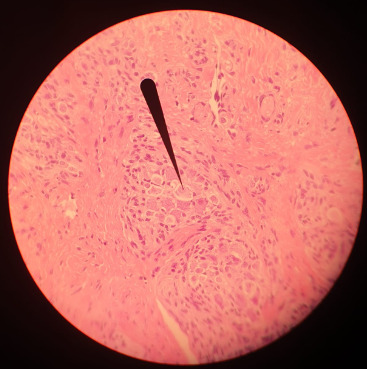
(Tongue HE-stain, pointer marking a ganglion; that is my picture)
Of course there are more specific stains for specific tissues like Golgi's silver staining for neurons.
For plants toluidine blue is often used, high affinity for acidic tissues, and can stain blue to green to purple.
It is often combined with safranin, a basic azine, which is probably the red stain you saw. It stains polysaccharides and lignin, woody parts of the plant. Safranin and astrablue is also often combined, astrablue stains non-lignified parts of the plant.

(Ulex europaeus stem; not my pictures I don't have any samples currently, source Atlas of plant and animal histology)
Safranin is also used in bacteriology, in the famous Gram staining. In Gram staining you use crystal violet (blue/purple), Lugol's iodine solution, then wash it with ethanol and add safranin (red) as a counter stain. Bacteria is gram-positive if the crystal violet stays in their thick murein cell wall, can't be washed out with the ethanol and the bacteria stays blue. Gram-negative appear red because of the counterstain.
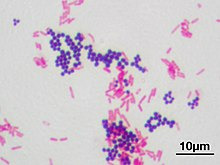
(Staphyloccocus aureus (violet, gram positive) & Escherichia coli (red, gram negative); not my picture, source Wikipedia)
However, I am not sure whether you have access to any of those substances, if they are too expensive for you or if they are too hazardous if used in your own room for a prolongued time. Of course those substances need to be stored properly, and your own room is probably not a good place, especially for ethanol or acetone. The fumes. I would recommend to ask your biology or chemistry teacher whether they can recommend anything further and where to buy said solutions in your area, and if they can't they are idiots. There are also many useful resources and tutorials on Youtube.
Another fascinating experiment for your microscope, that you can perform without buying any chemicals, is a hay infusion. You put hay into a container filled with water, and let it sit undisturbed for a week in a sunny area but not in direct harsh sunlight. During that time the microorganisms in the hay are reproducing in the solution, feeding on the polysaccharides of the hay. Protozoans also flourish in the hay infusion and eat the bacteria. It might get cloudy and a bit foul smelling (best not do it in your own room if you don't want to sleep next to a rotting smell).
When you put a drop of the solution onto a slide and look at it in the microscope, you should see a variety of microorganisms like bacteria (like Bacillus subtilis), amoeba, ciliates, heliozoa, algae et cetera. At different depths of the liquid you should find different kinds of organisms, because of differing oxygen content.
However, pathogens can also occur in the hay infusion so handle it carefully and work sterile, wash your hands properly.
And even if you don't work at a morgue you can still get tissue samples to experiment on, after all meat is sold in supermarkets, basically the same as a human body. And at the butchers they even sell organs like chicken hearts, pig kidney, liver, blood et cetera. Or observe your own hair under the microscope.
Which kind of samples and slides were included in your starter kit? Be careful to not leave them lying around in the sunlight, or the stain might fade. Always store them in the proper box.
#roleplay#rp#sherlock roleplay#sherlock rp#johnlock roleplay#johnlock rp#sherlock#bbc sherlock#sherlock holmes#sherlock holmes rp#sherlock holmes roleplay#science#scientist#research scientist#histology#microscope#microscopy#bacteria#bacteriology#pathology#anatomy#biology#chemistry#scientists#pictures#he stain#specimen#samples#slides#sherlock replies
46 notes
·
View notes
Text


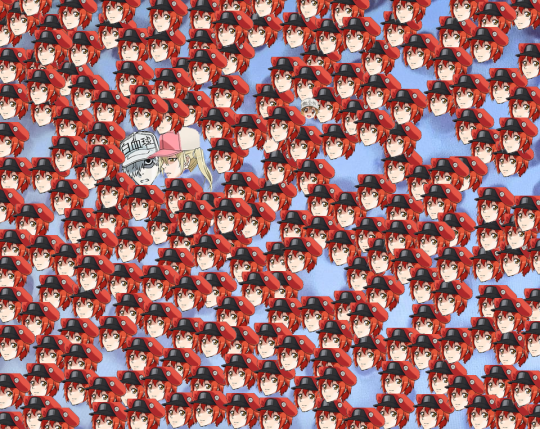
THEY'RE SURROUNDED
#cells at work#hataraku saibou#histology#courtesy of my histology lesson today#that one platelet is the only one i'm sure is a platelet
186 notes
·
View notes
Text
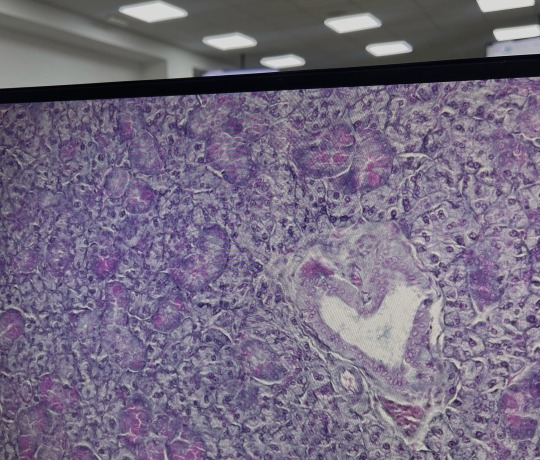
heart in histology 💓
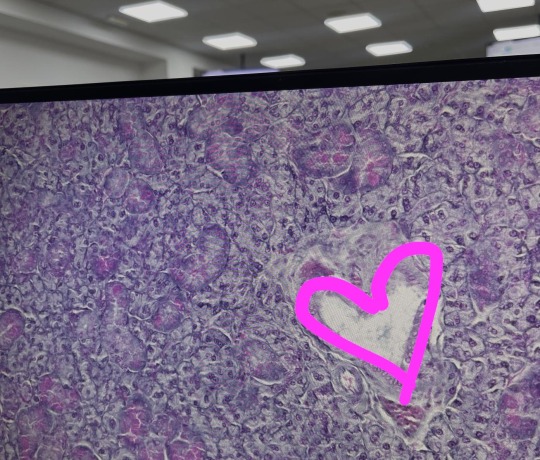
#study#study notes#study aesthetic#study blog#study space#studyspo#study motivation#studyblr#histology#medicine#med student
44 notes
·
View notes
Note
Is there anything about the life span of dinos around?
Tons!
Organisms grow in predictable ways and the bones of vertebrates can be used to measure their age much like a tree trunk
Lines of growth show up when you take a cross section of a long bone, and those growth lines can be analysed to determine the age
For example, we know Tyrannosaurus aged much like humans do (same timing for infant, juvenile, adolescent, subadult, adult) and lived usually to around 40 years of age.
109 notes
·
View notes
Text

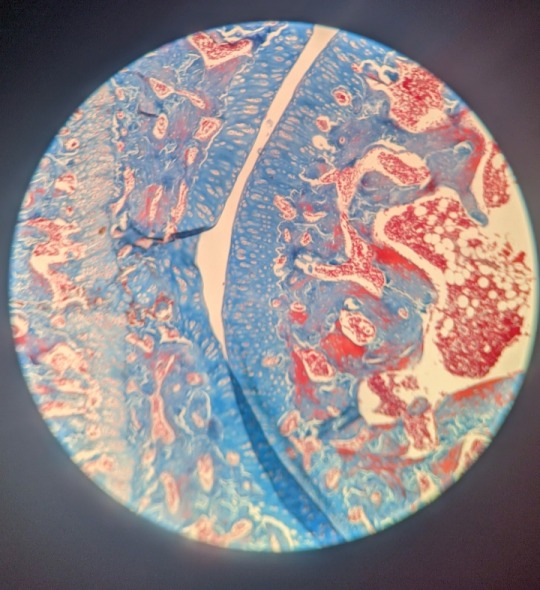
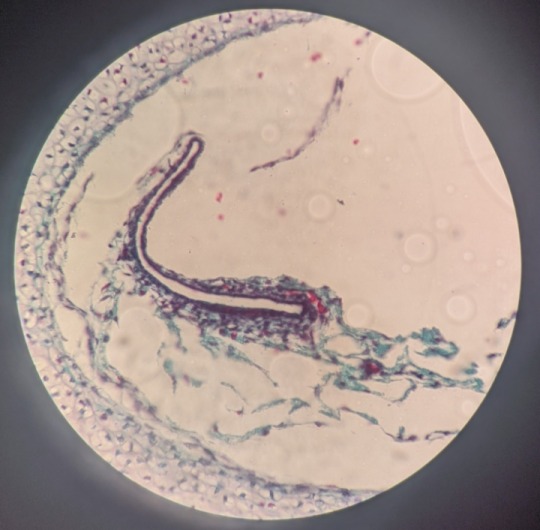
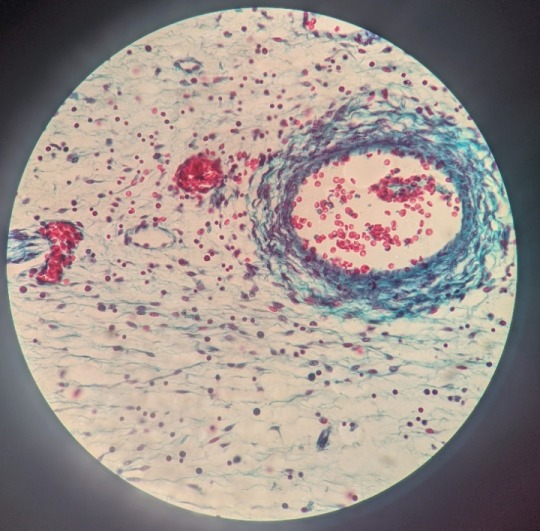
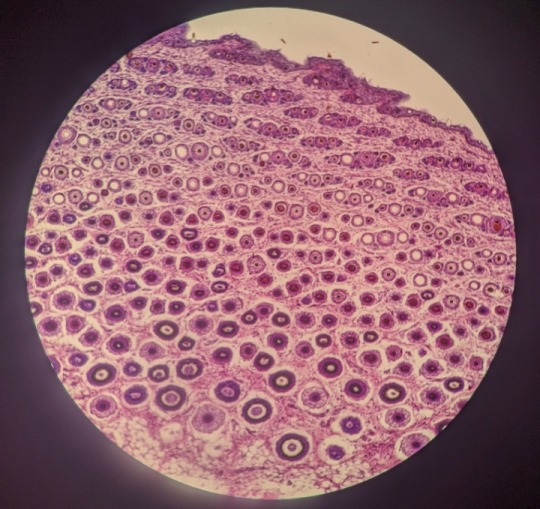

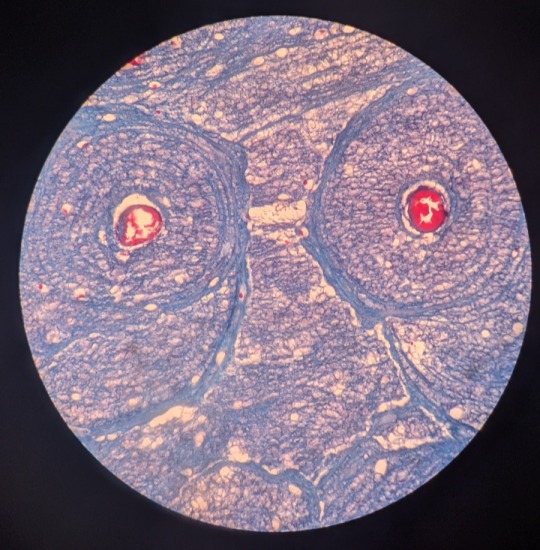
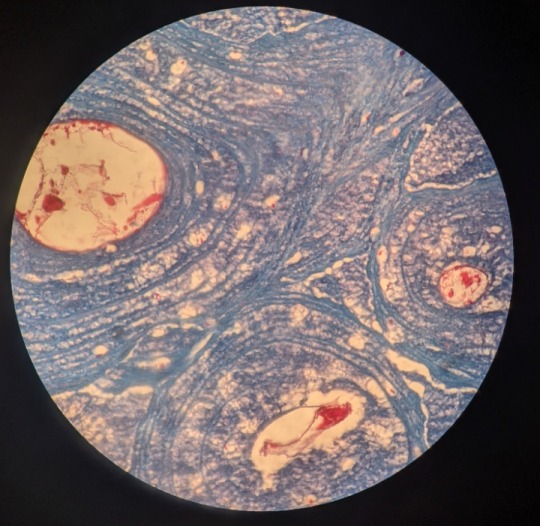


Tecido Ósseo - bone tissue. 🦴
78 notes
·
View notes
Text
Time for another appreciation post for sarcomas because I came across a mother of one the other day:

1 - a relatively normal cancer cell with a prominent nucleolus (dark dot in the middle of the slightly lighter oval)
2 - a cancer cell showing an increased cell size and a large nucleolus
3 - a cancer cell who decided to become a beast with significant karyomegaly and a huge nucleolus
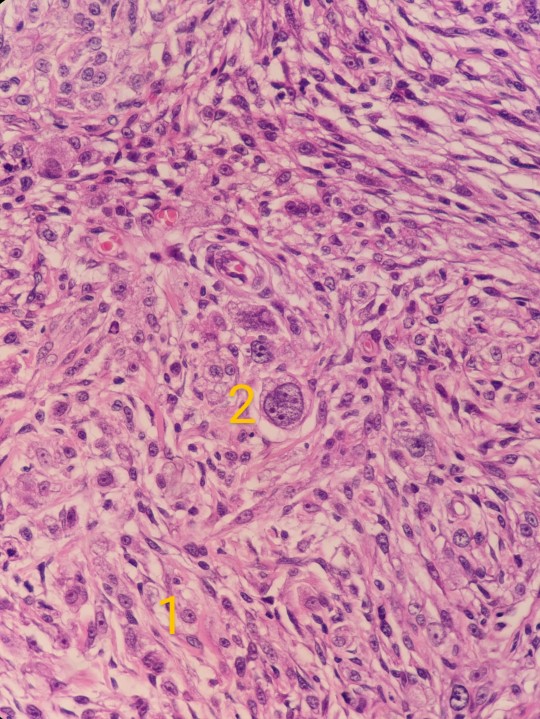
1 - a relatively normal cancer cell
2 - a super large beast with four nucleoli

1 - a normal sized cancer cell
2 - a cancer cell with two large nuclei of varying sizes (so a binucleated cell with karyomegaly)
3 - a cancer cell with karyomegaly and a large nucleolus
4 - me on an average monday
93 notes
·
View notes
Text
Okay so I’m in college to be a histotechnician (long story short I’m a specialized medical lab worker specializing in bodily tissue diagnoses.) My professor lets us label the tissue microscope slides with whatever names we want, and while I was looking through our backlog of slides I found THIS
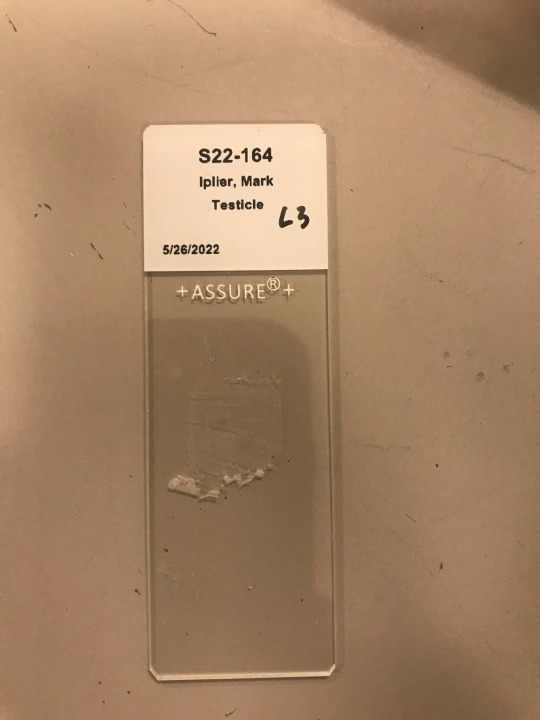
And nobody understood why I was laughing
#the words iplier mark testicle will forever make me laugh#markiplier#histotechnology#histology#mark fischbach#meme#medical memes#markiplier meme#science meme
211 notes
·
View notes
Text
Vintage field microscope (1900s or thereabouts) I bought online. Very cute and still working really well 🖤
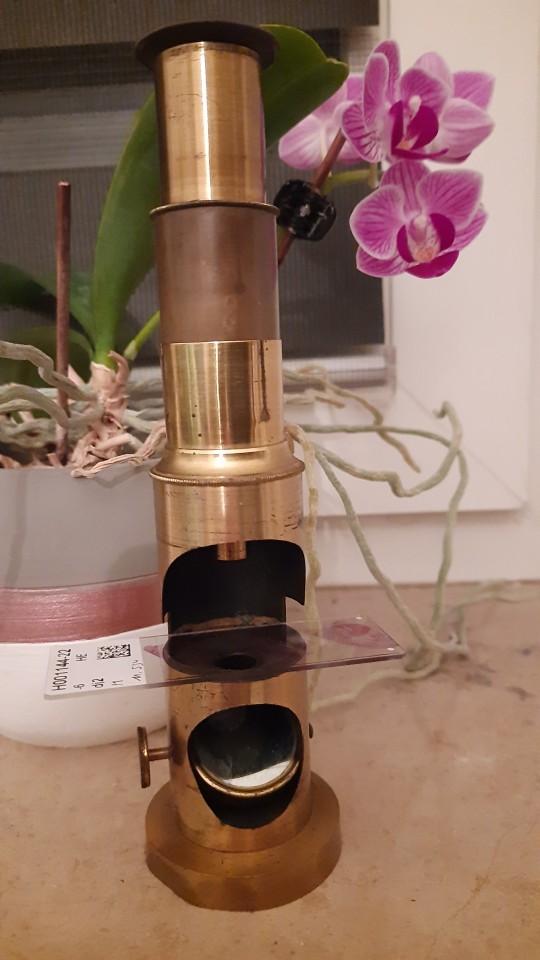

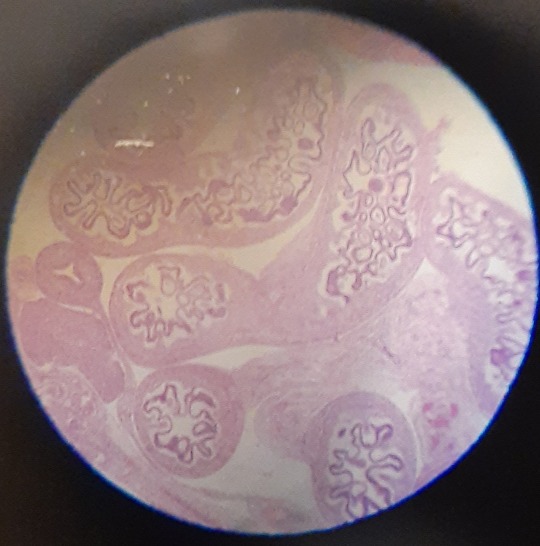
#excuse me being a terrible nerd#but look at how cute that is#pathologists just be like this#sorry not sorry ;)#vintage#microscope#histology#pathology
253 notes
·
View notes
Text
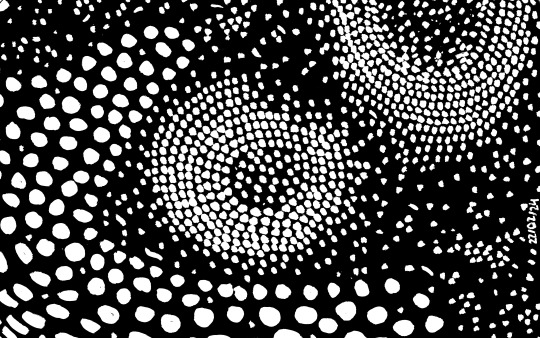


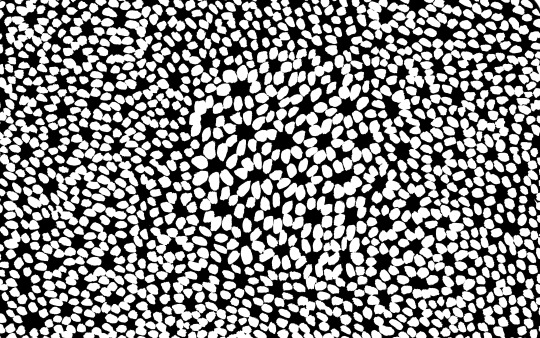
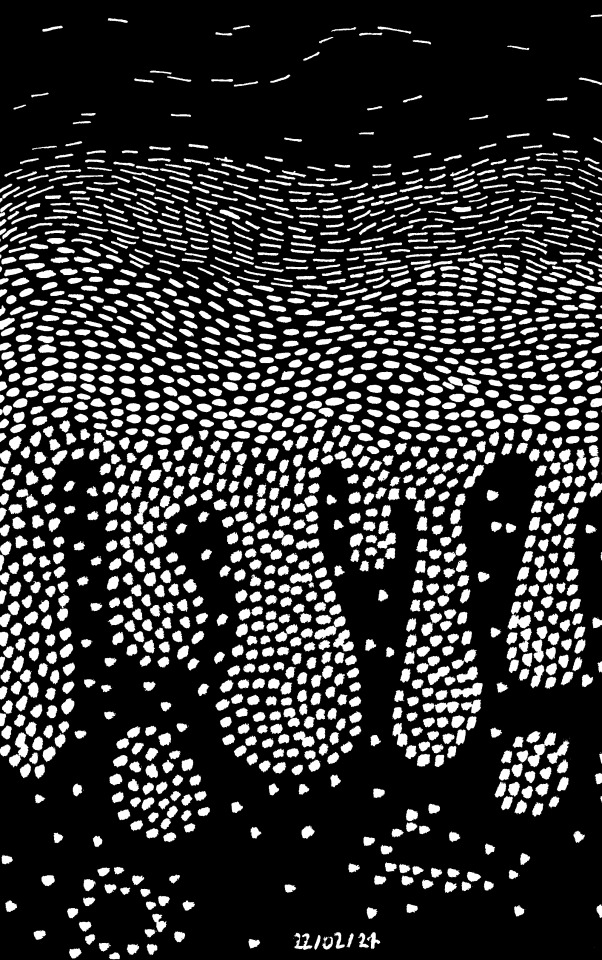

science doodles done at the lab during reunions
tertiary lymphoid structures
flow cytometry
leucocytes (back of the sketchbook)
neuroendocrine carcinoma
psoriasis
cellular leiomyoma
#sketch#science#medecine#biology#histology#flow cytometry#pathology#psoriasis#immunology#oncology#leucocyte
43 notes
·
View notes
Text




Day 54/100 of productivity
• anatomy lab
• anatomy study
• bacteriology study
• lab study
#studyblr#med school#medicine#studyspo#study motivation#anatomy#aesthetic#college#travel#books & libraries#medblr#microbiology#histology#humans#study desk#study aesthetic#study blog#study notes
43 notes
·
View notes